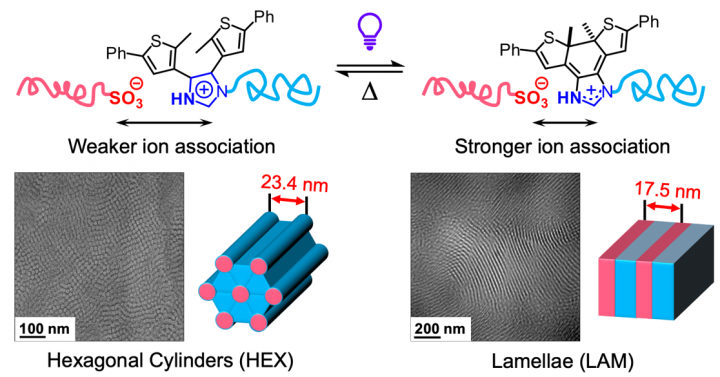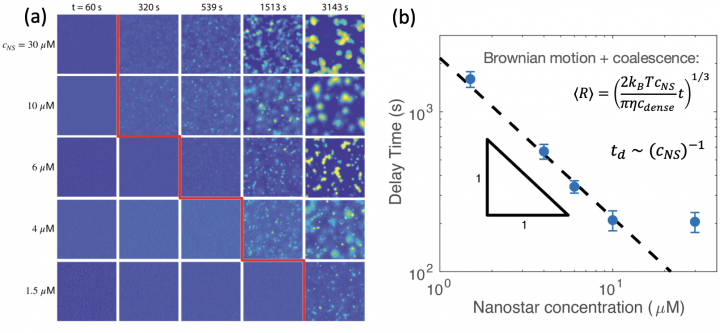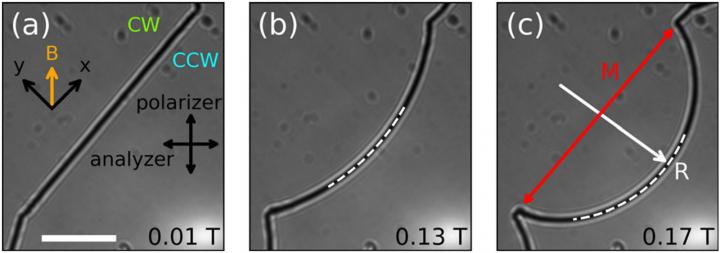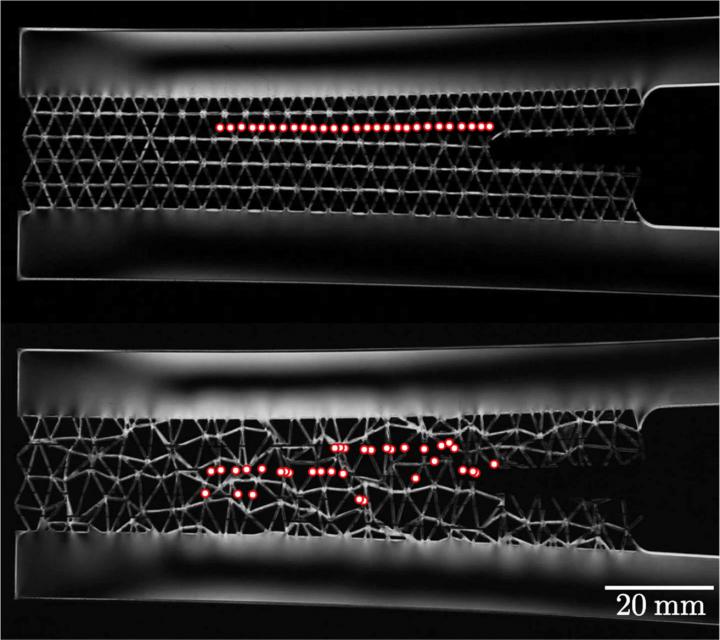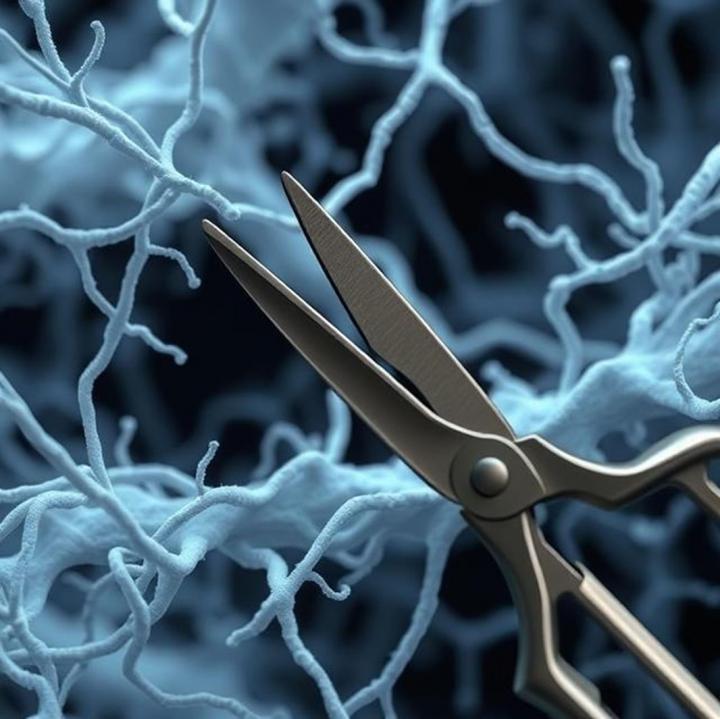Previously, UC Santa Barbara MRSEC researchers demonstrated that chain-end functionalization of immiscible polystyrene/polydimethylsiloxane (PS/PDMS) blends with oppositely paired acid and base groups forms ionic supramolecular block copolymers, where electrostatically stabilized microdomains prevent macroscopic phase separation.

